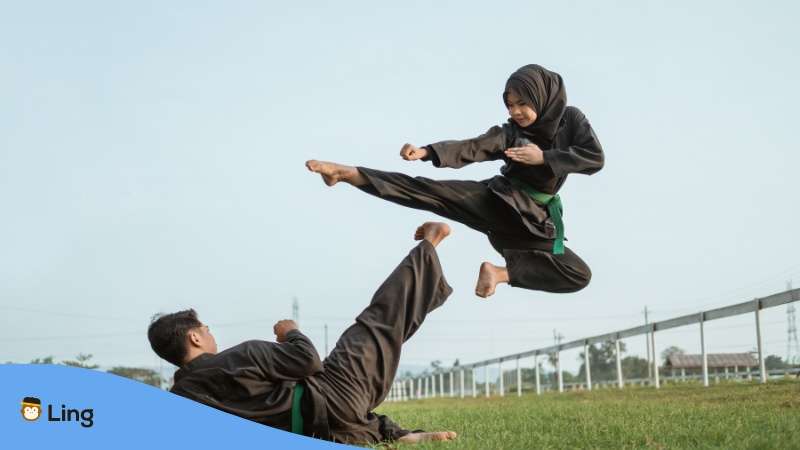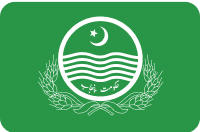Malay traditions are a rich tapestry of cultural influences woven over centuries of life in the Malay archipelago. This includes peninsular Malaysia, southern Thailand, and parts of Indonesia and the Philippines.
With a population composed mainly of ethnic Malays, and significant Chinese and Indian communities, these traditions reflect the diverse makeup of Malaysian society. But what are Malay traditions? Why is it so crucial for the Malay and Southeast Asian regions? Interested? Then let’s get to it and learn the basic facts and Malay words related to this topic!
What Are The Malay Traditions?
Malay tradition refers to the Malay people’s customs, beliefs, and culture of the largest ethnic group in Malaysia and the Malay Peninsula. This culture has been influenced by neighboring countries, including the Indians, Filipinos, Indonesians, Chinese, and Islamic worlds, resulting in a diverse and rich cultural heritage.
Throughout history, the Malay peninsula has been ruled by various sultanates and has played a vital role in Southeast Asian trade, attracting traders and settlers worldwide. This has significantly impacted the development of the Malay culture, which is evident in the diverse customs, traditions, and languages still practiced today.
Fact 1: The Role Of Malay Women
Have you ever thought about the role of women in traditional Malay society? In the past, Malay women played a significant role in preserving the customs and traditions of their communities.
They were responsible for passing down oral literature, cooking traditional cuisine, and participating in traditional performing arts. And while the role of women has evolved, their influence on the preservation of conventional Malay culture is still felt today.

Fact 2: Traditional Malay Arts
Do you know that Malay communities have a rich artistic tradition that showcases their culture and heritage? From traditional dances to weaving and wood carving, Malays have a unique way of expressing themselves through their arts.
1. Traditional Dances
One of the most prominent forms of traditional Malay arts is dance. The intricate movements of traditional dances, such as the Zapin dance and the Joget dance, are beautiful to watch and tell a story about their cultural heritage and traditions.
2. Traditional Malay Music
Traditional Malay music is characterized by instruments such as the gamelan, rebab, and gong. The gamelan is a set of percussion instruments that create a unique, melodic sound. The rebab is a stringed instrument, while the gong is a percussion instrument that adds depth and texture to the music.
3. Weaving
Another form of traditional Malay art is weaving. From conventional textiles to mats and baskets, weaving is an essential aspect of Malay culture, passed down from generation to generation.
4. Wood Carving
Wood carving is another beautiful Malay art that shows creativity and ingenuity. The intricate wooden door frames and beautiful wooden boxes are Malays’ long-standing tradition of using wood as a medium to create beautiful works of art.
Fact 3: Traditional Malay Festivals
Do you know that Malays celebrate more than just Hari Raya? Aside from that, many other Malaysian calendar celebrations showcase Malay traditions’ diversity.
1. Rice Planting Festival
The annual rice planting festival is a celebration of the start of the rice planting season. It is a time for Malays to come together to plant rice, sing traditional songs, and celebrate the beginning of a new growing season.
2. Hari Raya
In Malaysia, Hari Raya is a time for feasting, visiting with friends and family, and exchanging gifts. Streets are decorated with colorful lights and banners, and families prepare unique dishes for the occasion. Good quality chocolates are especially popular during this time, as they make great gifts for friends and family.
3. Harvest Festival
The harvest festival is a time for Malays to come together to celebrate the end of the growing season. It is a time for feasting, dancing, and giving thanks for a bountiful harvest.

Fact 4: Traditional Malay Cuisine
Traditional food culture in Malaysia is a feast for the senses, from savory curries flavored with coconut milk to sweet and spicy sambals. But traditional Malay food is more than just a matter of taste; it is also a way for the Malays to connect with their cultural heritage and preserve their traditions. Some must-try traditional Malay dishes include nasi lemak (rice boiled in coconut milk and served with various accompaniments), satay (skewered and grilled meat), and rendang (spicy meat stew).
Fact 5: Traditional Malay Sports
In Malay traditions, certain traditional sports are essential to Malaysian culture. One of the most prominent sports in the Malay world is Silat. Silat is a traditional martial art that originated in Malay. It is a form of self-defense that combines strikes, grappling, and throws to defend oneself against an attacker. Not only is it an essential aspect of Malay culture, but it is also a way for Malays to showcase their strength and agility.
Fact 6: Traditional Malay Architecture
The traditional Malay house, rumah kampung, is a wooden structure with a thatched roof. It is designed to keep Malays cool in the hot tropical climate. It features intricate wood carvings, woven mats, and traditional furnishings. This can be seen all over Malaysia, even in the capital of Kuala Lumpur.
Fact 7: Traditional Malay Literature
The Malay people have a rich cultural heritage, which is evident in their traditional literature. One of the most important historical texts in the Malay world is the Sejarah Melayu. This tells the story of the Malay people and their cultural heritage.
It contains accounts of the rise and fall of the Malay sultanates, the interactions between the Malay courts and the Indian and Chinese communities, and the cultural and political developments in the region.
Fact 8: Traditional Malay Medicine
Traditional Malay medicine is a long-standing practice in Malaysia that uses natural remedies for healing. The belief is that the body can heal itself, and the natural world provides the treatments necessary for good health. The following are the most common techniques used in traditional Malay medicine:
- Herbal Remedies: The use of plants and herbs to treat various illnesses and ailments. This practice is based on the belief that natural substances can stimulate the body’s healing process.
- Massage Therapy (Urut): A physical therapy that involves manual manipulation of the body’s soft tissues to improve circulation, relieve pain, and increase mobility.
- Acupuncture: The practice of inserting needles into specific points on the body to boost energy flow, relieve pain, and promote healing.
Fact 9: Malay Family Structure And Values
The traditional Malay family structure is extended, with close relationships and a strong sense of unity and support within the family unit. The family is considered the most important social unit in classic Malay society and is highly valued. Some of the core values associated with the traditional Malay family include:
- Respect for elders: Older family members are highly regarded and treated with reverence and respect.
- Collectivism: The family is viewed as a collectivist unit, where individual needs and goals are subordinated to the well-being of the family as a whole.
- Sense of responsibility: Family members feel a strong sense of responsibility towards one another and often go to great lengths to help and support their relatives.
How Malay Traditions Are Preserved
Malay education and religion play a significant role in shaping the values and beliefs of the community. Here are two of the essential elements that help in keeping Malay traditions.
Education
For many Malays, education begins at home, where parents and elders pass down valuable lessons and teachings. As children grow older, they attend Islamic religious schools, known as madrasahs, where they learn about the Quran and Islamic history and practice. In schools, this is where they learn and practice the traditions so that everyone will learn to appreciate the country’s fantastic heritage.
Religion
In addition to attending religious schools, Malays also attend mosques and engage in other religious activities, such as fasting during Ramadan and performing the Hajj pilgrimage. But the religion in Malaysia isn’t just about individual spiritual growth. It’s also about community and togetherness, the foundation of the common Malay traditions. Malays believe their religious practices bring them closer together and help create a solid and united community.
Common Phrases For Exploring Malay Traditions
Just like in any other foreign country, it is always helpful to know some common phrases to communicate effectively and respectfully. Here are some useful conversational Malay phrases for exploring the rich traditions and culture of Malaysia:
| English | Malay |
| Good morning! | Selamat pagi! |
| Thank you! | Terima kasih! |
| My name is … | Nama saya … |
| Can you help me? | Bisakah anda membantu saya? |
| I want to learn about Malay traditions. | Saya ingin belajar tentang tradisi Melayu. |
| Where can I find traditional Malay performances? | Di mana saya bisa menemukan pertunjukan tradisional Melayu? |
| I want to buy traditional Malay items. | Saya ingin membeli barang-barang tradisional Melayu. |
| What does … mean? | Apa arti dari …? |
| I want to try traditional Malay food. | Saya ingin mencoba makanan tradisional Melayu. |
| Can I take a photo with you? | Bisakah saya berfoto dengan anda? |

Learn The Malay Language With The Ling App
Now that you know Malay traditions and all the significant aspects of this rich culture, it’s time to dive even more profound. If you’re interested in learning the Malay language and the traditions that come with it, I’ve got just the thing for you!
The Ling app is the perfect solution to help you take your language-learning journey to the next level. With in-depth lessons and a focus on meeting the needs of our users, you’ll have everything you need to master the Malay language. Download the app from App Store and Google Play today and explore this fascinating world.


































































